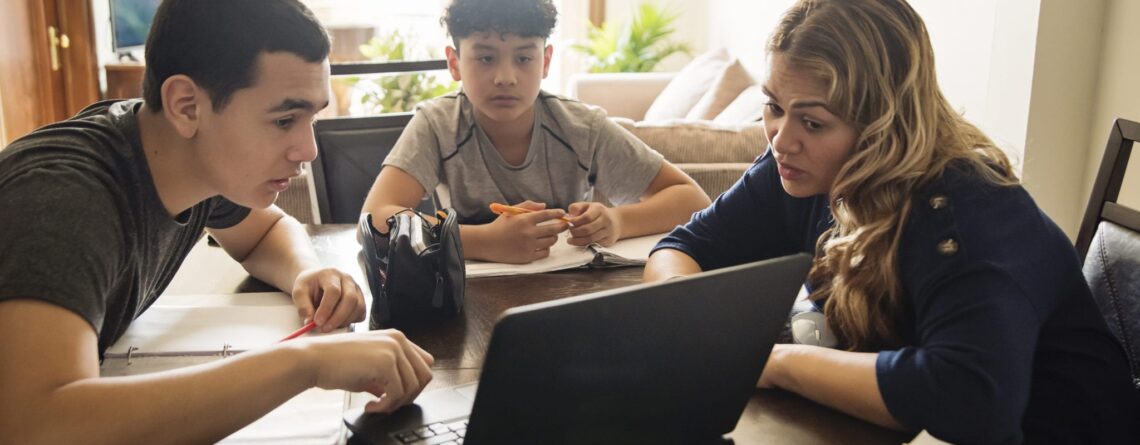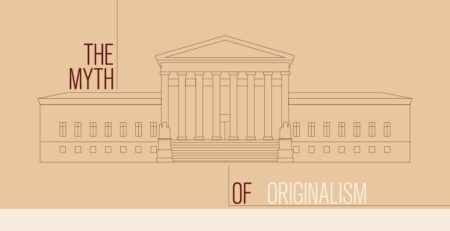This is custom heading element
[post-fields post_field=”wpcf-subtitle”]
[post-fields post_field=”wpcf-byline”]

Over the past nine months, we’ve witnessed the largest disruption of the U.S. education systems in history. As parents review report cards and face another semester of learning amid a global crisis, Jennifer Darling-Aduana, assistant professor of learning technologies at Georgia State’s College of Education & Human Development, is looking at what we’ve learned about virtual instruction and what is possible for the future.
For students and teachers, COVID-19 has worsened inequality and uncovered new challenges. Last fall, a majority of kindergarten through 12th grade parents reported being concerned about their student falling behind. Close to 60 percent of parents with lower incomes say their children are facing digital obstacles to complete their classwork, such as having to do assignments on a cell phone or having no access to a home computer or reliable Internet service.
Darling-Aduana recently co-authored a new book, “Equity and Quality in Digital Learning: Realizing the Promise in K-12 Education,” that chronicles how two school districts in Milwaukee and Dallas attempted to enact equity-focused digital learning over a decade. Each chapter provides tools and actionable insights at a different level of implementation: the policy level, school level, classroom level and student level. Here she shares her thoughts on the pandemic’s effects on students and what changes are needed to help them succeed.
The pandemic has upended so many people’s lives, particularly parents, students and educators. What are some of their biggest challenges right now?
The pandemic has exacerbated existing inequities. Challenges such as economic security, safe, high-quality childcare and access to healthcare are even more salient in families’ lives than they were a year ago.
Educators are facing these same challenges. Many are also taking on additional emotional labor and extending their working hours to reach out to families and accommodate student needs.

The pivot to virtual instruction raised a lot of questions about equity and access. Have we begun to address these issues yet?
There has been an outpouring of support from school districts, foundations and private companies to address the digital divide in terms of access to devices and the Internet. Disparities persist along socioeconomic, racial/ethnic and geographic lines, but progress has been made.
An equally important and less reported on concern is differential access to quality, culturally relevant pedagogy. As was true prior to COVID-19, the educational opportunities provided to students are systematically different based on family resources where they attend school. Students from non-dominant cultural groups are systematically less likely to see their individual, community and cultural identities acknowledged, valued or integrated in their day-to-day academic experience. Some states, districts and individual teachers are starting to address these concerns, but the work is only just beginning and must extend well past the COVID-19 pandemic.
Over the past nine months, education has been disrupted for millions of students across the U.S. What do you think some of the long-term impacts of this will be?
Perhaps the best-documented concern is the potential for learning loss, particularly among students who belong to marginalized groups. Policymakers and educators are already trying to develop interventions to address this concern. While there is the potential for this to have long-term implications, with sufficient funding and support this is a challenge educators and researchers have experience mitigating.
What is less clear is what sort of longer-term socio-emotional impacts might emerge. Students have experienced an extended period of insecurity, anxiety and stress. Many have experienced economic insecurity, the illness and death of family members and other traumas. We need to be prepared not just as educators but as a society to support children as they process these experiences.
Across society, the pandemic has accelerated the adoption of remote technology. Will this transition to digital classes continue even after a return to in-person school?
The crisis-driven shift to online learning meant that much of the infrastructure- and expertise-related roadblocks to larger-scale online learning have been addressed, at least in part. Because there are many potential benefits to online learning depending on the context, I think it’s likely that some students and schools will continue to integrate various types of technology-facilitated and/or virtual learning at higher rates than prior to the pandemic. At a student and family level, there has also been increased interest in fully virtual schools and homeschooling. I expect that at least some of these families will chose to continue in these alternative formats.
What are some of the most creative or groundbreaking digital teaching strategies you’ve seen?
I’d like to believe that it’s not a particularly groundbreaking teaching strategy, but the virtual programs I’ve seen benefit students the most over that past year are those that treat students as whole people. Always, but particularly during a national crisis, students need opportunities to connect to others, feel like they are a part of a community. The more stressful the external factors are, the more important it is to provide opportunities for students to bring their whole self and experiences into the classroom and take time to develop trust and respect with each child as an individual.
This doesn’t mean sugar-coating what is going on in the world and in children’s lives. It means acknowledging, engaging with and working to mitigate what they’re experiencing to help them grow as learners and more broadly as individuals. Developing a community of learners is a prerequisite to academic engagement under normal conditions, but it becomes even more critical when there are increased internal and external barriers to accessing and participating in education.
Has anything been gained from the transition to remote learning? Can online education compete with face-to-face instruction?
I’d like to suggest rephrasing the question, because online learning is simply a new medium for instructional delivery. The full spectrum of high- to low-quality instructional techniques implemented in traditional, face-to-face classrooms across the country can be implemented in some form or another (with similar rates of success) virtually. The prerequisites for quality education — whether it be online or face-to-face — are more similar than they are different. If you want to know whether crisis schooling (regardless of whether it’s online or face-to-face) can ever compare with non-crisis schooling, then of course not. That speaks more to the pandemic and the state of this country than it provides any true test of the promise or limitations of online learning.
I also want to acknowledge that there is an increasingly wide body of academic research demonstrating that the education system in the U.S. has systematically failed many students, even before the pandemic, creating an educational opportunity gap. Therefore, the goal cannot be simply to recreate the same flawed educational systems online but rather to reimagine education to better serve all students and communities. I believe that digital tools and virtual platforms can be helpful toward achieving that vision, but it’s the underlying curriculum and instruction and not the tools selected that will make or break the educational system.












Leave a Reply